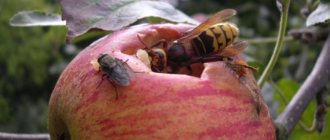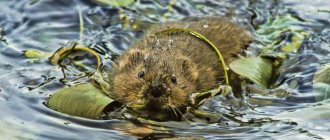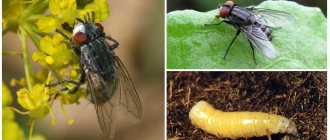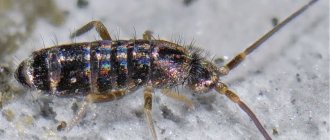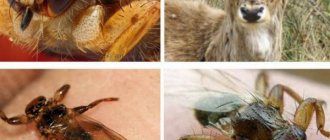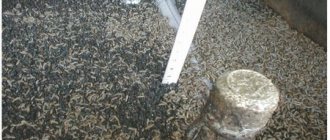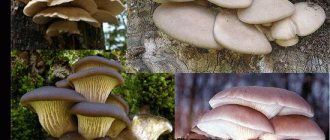Nepenthes
This is a trap flower with water lily shaped leaves. There are more than 130 varieties that grow in Sumatra, India, China, and Australia. There is also another name for the flower - monkey cup. That's what scientists called it when they conducted research and witnessed how monkeys drank from them the water that accumulated after the rain.
This flytrap looks like this: a 15 meter tall vine with shallow roots. On the stem part of the plant there are leaves with peculiar tendrils. They protrude from the tips of the leaves.
Interesting!
At the end of the antennae there is a small vessel that, when expanded, forms a deep cup; this is a trap for the insect. This trap contains a watery or sticky liquid that attracts flies.
Sarracenia (left) and Nepenthes (right)
Predatory plants in the house
The choice should be made in favor of Sundew or Flycatcher. After you buy an indoor flower that catches flies, it needs some time to adapt to a new place. From time to time you will have to catch several live insects for him, because they are the ones who activate the digestive process. You cannot feed it with large bugs; they should be half the size of the trap itself. Three flies a day are enough, no more.
Plant propagation
Insectivorous plants are propagated by dividing the bush or by cuttings; the flowers themselves prefer pollination. In nature, insects help them, but at home they have to get used to manually transferring pollen from the stamens to the pistil. Many species bloom at the end of spring.
In nature, these flowers reproduce by pollination, but cuttings are also possible at home.
Winter care
In winter, carnivorous plants stop growing and go dormant. During this time, the flower gains strength for further growth and flowering. During this period, you need to continue to care for the plant, removing dried leaves and watering.
Home conditions
The following carnivorous flowers can be kept indoors:
- tropical butterwort;
- sundew;
- Venus flytrap;
- sarracenia.
It is better to keep a pot with a carnivorous flower in a well-lit place. This could be a windowsill or artificial lighting (in winter, with a lack of sunlight). Such flowers love moist soil, so you need to avoid drought and water them in time with melted, slightly acidic or neutral water. Salts in tap water can kill the plant. Carnivorous flowers need moderate temperatures: +15...+30°C in summer and +10...+14°C in winter.
Stapelia
This is a cactus that eats flies. It has no stem, but its fuzzy flowers with spots resemble a sea creature. Another name for the plant: star cactus, large toad flower. May also be called starfish. The diameter of the flowers is about 40 cm. The smell of decaying flesh is very attractive to flies, beetles and larvae. They crawl into the central part of the plant, where they die.
On a note!
Place of growth of slipway South Africa. But the flower is often grown in Russia to decorate a stone garden or home landscape.
Lysiheaton
It mainly grows near swampy areas, river banks and ponds in North America. The Indians used it for cooking and treating various diseases.
This is a stinky plant that smells like a scared skunk. That's why it was nicknamed skunk cabbage. This smell attracts insects. This plant can also raise its temperature to survive the winter.
Plants that eat flies
Where to buy flowers that eat insects
Acquiring predatory flowers is not a particular problem. They are offered in the form of shoots by amateur flower growers, and in the form of mature plants by some online floristry stores.
In the wild, namely in North America, the Venus flytrap is quite widespread. But local biologists are sounding the alarm; numerous poachers are destroying green spaces, offering plants to exotic lovers.
To stop the process of mass destruction of plants, the police mark wild Venus flytraps with eco-friendly paint; these paints glow in ultraviolet rays and the police quickly manage to identify illegally sold specimens; it is officially allowed to sell only plants from nurseries and home greenhouses.
Flowers that eat insects are not poisonous; if you wish, you can keep them in the house. Observing such plants is undoubtedly very interesting.
But when buying such a flower, you should understand that it requires special care, and in addition, problems with its nutrition may arise.
Devil's fingers
This mushroom at first looks like a chicken egg with a heterogeneous lumpy surface, gray in color and brownish and pinkish spots at the base. But when its blades open, it looks like a star-shaped flower with many tentacles. Inside the plant is lumpy, spongy with dark mucus. Insects are attracted to the cadaverous smell that the plant emits. A photo of a flower that eats flies is shown below.
Plants that eat flies
Venus flytrap (Dionaea)
A hybrid that summer residents recommend
It is because of its hunting method that this flower, which eats flies, is a tasty prey for a poacher. No other carnivorous plant slams a trap, and so effectively. Considering that the leaves are equipped with teeth along the edges, the hunt looks as if a trap has snapped shut or a wolf's teeth have snapped. Again, the digestion process is hidden, unlike the butterfly, so nervous observers are spared from observing the “torment” of the insect and the need to sympathize with it. All these features have made the flycatcher a desirable pet for many lovers of indoor plant growing. There are a very large number of those who want to boast that they have a flower on their windowsill that eats flies. The price stops some people, but it cannot be said that it is too excessive. On average, in specialized stores they ask for 600 rubles for a Venus flytrap; however, small copies can be bought for three times cheaper.
By the way, Dionaea is not the only carnivorous plant you can buy. Nepenthes, sarracenia, sundews, and other carnivorous flowers are sold in the same price range.
I know about the Venus flytrap. she has been living with me since April. I read a lot of information and this is what I learned for myself. It should be watered only with rain or distilled water. This is easy to do. Distillate is sold in pharmacies or car dealerships. So - one problem solved. She needs sun at least about 4 hours a day. To solve this problem, an east or west window is suitable. The second problem is solved. Next, Dionaea does not like to be turned in different directions towards the light source, i.e. you need to make a mark on the pot and do not turn the plant in different directions towards the light source. Is the problem resolved? I think yes. And now about feeding. Under no circumstances should you feed meat, sausage, etc. Only live insects (flies). Never tease traps just like that. They are designed for only 3-4 slams, then they die. I get out of the situation like this: I catch a fly and put it in a jar. I place this jar in the refrigerator for a few minutes. There the fly falls asleep a little. I calmly take it by the wings with tweezers and bring it to the open trap - the mouth. The fly begins to flounder with its legs, the trap is triggered. The spectacle is very interesting. Everything happens very quickly, you just need to have time to pull back the tweezers. That's it, there's a fly inside. Dionaea digests it in about 3-4 days. The trap then opens and is ready to receive flies again. During the summer season, a flycatcher needs 3 flies. And this problem is completely solvable. Closer to winter, it is necessary to gradually lower the temperature of the Dionaea (it is possible to place the Dionaea on the balcony), and it needs to overwinter in the refrigerator, at a temperature of 4-8 degrees. This too, I think, will not be difficult
In the spring, take the plant out of the refrigerator and carefully transplant it into high-moor peat, with moss and sphagnum on top. Bulbs may be found during transplantation
You need to carefully plant them and you will end up with several flycatchers. You can give it to your friends. Everything is very easy and simple. I forgot to write to you that it is good to keep dionaea in small terrariums, since humidity can be maintained there and the substrate will not dry out very quickly. Drying out the substrate is fatal for Dionaea. My raster was sold in a small transparent glass. I moved it into a small transparent glass vase with a wide neck to allow good air access. It turned out very nice. Here are some content tips. My dionaea looked very tired when I bought it. Now she is chasing me sheet after sheet. And there are mouth traps on every leaf. During the time that I have had it, it has already grown 5 leaves and three more are on the way, they are already visible. I water only with distilled water. I won’t feed any more flies, I’ve already eaten three – that’s enough. If you can provide her with the conditions, then buy her, you won’t regret it, she’s a very entertaining little girl. Good luck to you.
Darlingtonia
Place of growth: Oregon, California. It grows in springs and swamps, a rare plant. The bulbous leaves form a cavity with an opening for insects to enter. It is located under an airy structure and 2 sharp hanging leaves, they look like fangs.
A crab claw trap is used. When the fly gets inside the plant, it dies. The insect is confused by the light that shines through the plant. They follow thick thin villi far into the depths until they enter the digestive organ. But they will never be able to go back.
Venus flytrap (Dionaea Muscipula)
House hyacinth (hyacinthus): perennial flower
Its leaf blade is divided into two areas: flat, long, heart-shaped petioles capable of photosynthesis and a pair of terminal lobes hanging from the main vein of the leaf, which form a trap. The inner surface of these lobes contains red pigment, and the edges secrete mucus.
The leaf lobes make a sudden movement, slamming shut when its sensory hairs are stimulated. The plant is so advanced that it can distinguish a living stimulus from a nonliving one.
. Its leaves slam shut in 0.1 second. They are lined with thorn-like cilia that hold prey. Once the prey is caught, the inner surface of the leaves is gradually stimulated, and the edges of the lobes grow and merge, closing the trap and creating a closed stomach, where the prey is digested.
Zhiryanka
To lure and digest prey, the plant uses sticky, glandular foliage, similar in principle to duct tape. Nutrients after digestion by the insect feed the soil with mineral compounds. Place of growth Asia, Europe, North and South America. There are about 80 varieties there.
The leaves of this plant are pink or green. There are 2 types of cells that are located on the upper side of the foliage. One of them is the flowering gland, consisting of secretory cells. They produce a sticky mucus that forms droplets on the surface of the foliage. The second cell is sessile glands. They produce secretions that aid digestion. Most species of Zhiryanka feed on insects all year round. But there are also flowers that feed on flies when summer comes. It blooms again, new carnivorous foliage appears.
Plants that eat flies
Mechanism of plant digestion
The grasses that eat flies appeared in the process of evolution, in conditions of lack of nutrients, mainly nitrogen.
According to the method of fishing, all species can be divided into two groups.:
- Active. These flowers set special traps that lure flies, and then close them when the victim appears. Active predators include sundews and flycatchers.
- Passive. These grasses form traps and slowly wait until a fly gets caught in them.
Flowers that feed on midges first soften their prey with a digestive fluid containing enzymes, and then suck out the soft parts of the fly's body, leaving a dried-out skeleton.
Active predators hunt only when they feel a lack of nutrients. In terms of the number of victims caught, they are somewhat ahead of passive plants.
Sundew
They grow in Russia, Siberia and the Far Eastern regions. They can exist even in severe frosts, forming thermal insulation on the buds. In spring, the hunt for flies and other insects begins. The leaves are covered with thin red fibers, they produce droplets in the form of dew. During the first warm months, the Sundew feeds on bugs, then on pollinating insects.
Interesting!
Sundew has a deadly effect on insects, but it is very useful for humans. The plant helps alleviate the condition of epileptic seizures, bronchitis, asthma, and atherosclerosis.

